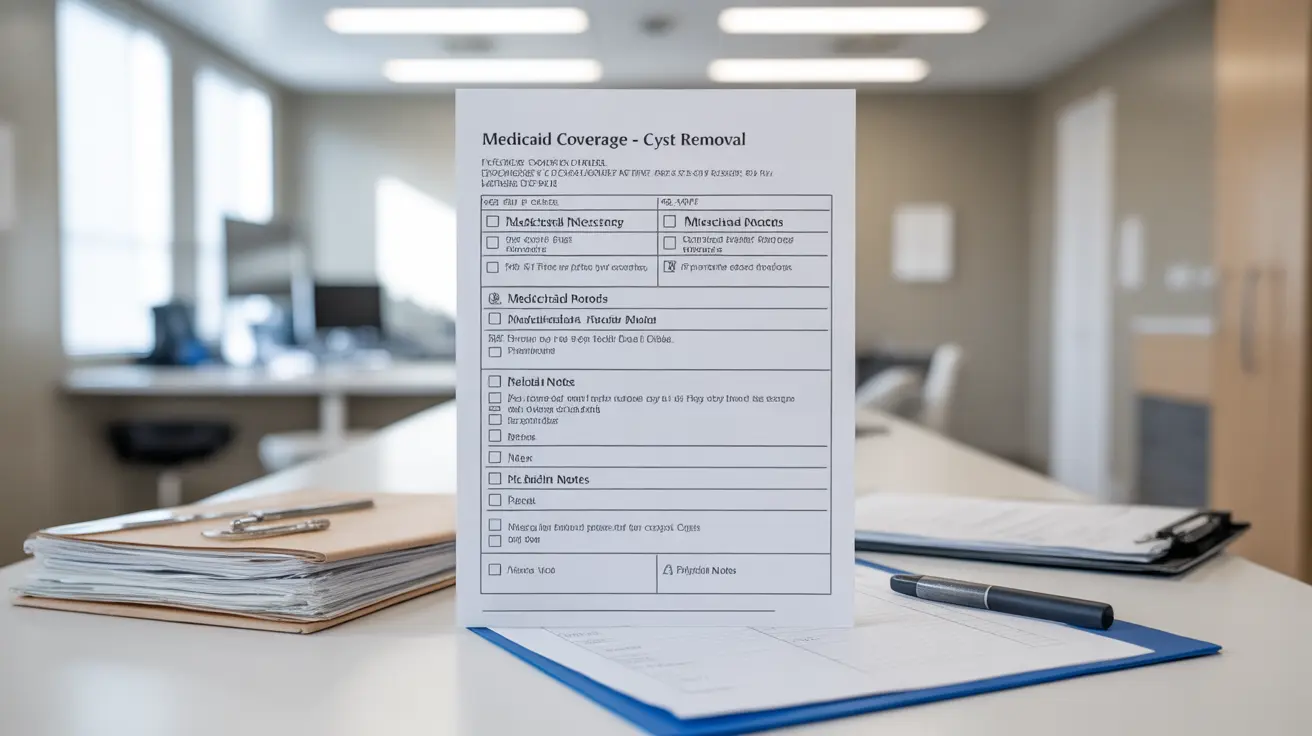Understanding whether Medicaid covers cyst removal procedures is crucial for many patients seeking treatment. This comprehensive guide explores the conditions under which Medicaid provides coverage for cyst removal, the necessary medical criteria, and how to navigate the approval process.
Understanding Medicaid Coverage for Cyst Removal
Medicaid coverage for cyst removal varies by state and depends primarily on medical necessity. While Medicaid generally covers medically necessary procedures, specific requirements must be met to qualify for coverage.
Medical Necessity Criteria
For Medicaid to cover cyst removal, the cyst typically must present one or more of the following conditions:
- Infection or risk of infection
- Significant pain or discomfort
- Interference with daily activities
- Location that causes functional impairment
- Evidence of growth or change
Coverage Requirements and Documentation
Healthcare providers must thoroughly document the medical necessity of cyst removal to secure Medicaid coverage. This documentation typically includes:
- Detailed medical history
- Physical examination findings
- Photographic evidence when applicable
- Previous treatment attempts
- Impact on patient's quality of life
State-Specific Guidelines
Each state's Medicaid program maintains its own specific guidelines for cyst removal coverage. These guidelines may include:
- Prior authorization requirements
- Preferred healthcare providers
- Covered procedure types
- Documentation standards
- Cost-sharing obligations
Cosmetic vs. Medical Necessity
Medicaid typically does not cover purely cosmetic procedures. To qualify for coverage, the cyst removal must be deemed medically necessary. Factors that support medical necessity include:
- Recurring infections
- Chronic pain
- Restricted movement
- Risk of complications
- Impact on essential daily functions
Steps to Secure Coverage
To ensure Medicaid covers your cyst removal procedure, follow these essential steps:
- Consult with a Medicaid-approved healthcare provider
- Obtain proper documentation of medical necessity
- Submit required prior authorization forms
- Keep detailed records of symptoms and complications
- Follow up with your state Medicaid office as needed
Frequently Asked Questions
Does Medicaid cover the removal of sebaceous cysts and under what conditions?
Yes, Medicaid typically covers sebaceous cyst removal when deemed medically necessary. Coverage is usually approved when the cyst causes pain, infection, functional impairment, or has a significant risk of complications.
What medical criteria must be met for Medicaid to approve cyst removal coverage?
Medical criteria typically include documented evidence of infection, pain, functional impairment, or risk of complications. Your healthcare provider must clearly demonstrate that the procedure is medically necessary rather than purely cosmetic.
How can I find out if my state Medicaid plan covers cyst removal procedures?
Contact your state Medicaid office directly, review your plan documentation, or consult with a Medicaid-approved healthcare provider. Each state's coverage policies may differ, so it's important to verify specific requirements in your area.
Is cyst removal covered by Medicaid if it is done for cosmetic reasons?
Generally, Medicaid does not cover cyst removal procedures performed solely for cosmetic purposes. The procedure must meet medical necessity criteria for coverage approval.
What steps should I take to ensure cyst removal is covered by Medicaid before the procedure?
Begin by consulting a Medicaid-approved provider, obtain proper documentation of medical necessity, secure prior authorization if required, and confirm coverage details with your state Medicaid office. Keep detailed records of all communications and medical documentation throughout the process.




